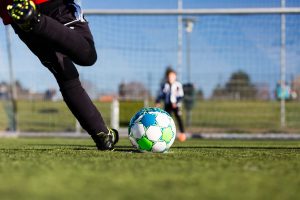 The NU Moves Physio team has recently completed a masterclass debating the best approach to manage and treat adductor pain and tendon problems with footballers. Journal articles were found and discussed relative to the NU Moves approach to diagnosis and treatment.
The NU Moves Physio team has recently completed a masterclass debating the best approach to manage and treat adductor pain and tendon problems with footballers. Journal articles were found and discussed relative to the NU Moves approach to diagnosis and treatment.
The following is a summary of the NU Moves masterclass. The current best approach to assist a footballer with pain in the groin or adductor region:
- Diagnosis is essential: There are many different possible sources of pain into the groin / hip area. Identifying the likelihood of each of these (e.g. osteitis pubis, stress fractures, avulsion fractures, bursitis, tendon strain, hernia, arthritis, lower back referral) via a thorough assessment is essential. Subsequently investigations (Xray, CT scan, MRI, Ultrasound) to confirm or negate are considered. The timing of investigations depends on the risks of the problems and whether treatment is altered because of the investigation findings.
- Treatment of adductor tendon pathology:
- Note that this requires consideration and exclusion of all the other potential causes of hip pain.
- Don’t stretch the adductor muscle area – the right type of strength and functional return to sport exercises will assist recovery of flexibility and stretching is more likely to irritate the problem.
- Stability is essential – becoming core stable in the pelvis by focussing on strengthening the gluteal and abdominal muscles in sport specific positions (i.e. one leg stand) is the starting point and can often be done very quickly after injury occurs.
- Strengthening the adductor tendons – when commenced at the correct time after the injury, adductor strength exercise is useful in improving long term outcomes of full pain free return to sport. This could be a ball squeeze between the ankles / knees in lying or a band or cable resistance exercise in standing (as long as the pelvic stability stage has been achieved).
- Graded return to running: graded return to jogging then running then change of direction exercises is essential. Once the tendon can cope with it and the pelvic / core stability is adequate then a terrific way to strengthen the area for running is to start jogging. The problem is when you go too hard too soon and create a flare-up of pain that lasts several days. Flare-ups are a set back to the eventual goal of return to playing again.
- Sport specific exercise: kicking / striking / passing the ball in football can all be done lightly and gradually increased in a comparable way to jogging and running. Similarly, once pelvic / core stability and sufficient local strength of adductors is achieved, these are a great way to strength load the area for sport. Again, be wary of flare-ups by progressing too quickly.
The adductor tendon strain is a frequent problem in sport and particularly in football. The best advice is to get an accurate diagnosis first then an active exercise program including 3 parts: the pelvic / core stability, the adductor tendons themselves, and a sport specific program. Getting the right level of loads on the area during each phase of recovery is essential to the process. That is where we help the best.
If you want the best diagnosis and treatment then call us at NU Moves if you have groin pain or a known adductor problem. If you have a friend or family member needing advice to get back to sport then recommend us.



 The NU Moves Physio team has recently completed a masterclass debating the best approach to manage and treat adductor pain and tendon problems with footballers. Journal articles were found and discussed relative to the NU Moves approach to diagnosis and treatment.
The NU Moves Physio team has recently completed a masterclass debating the best approach to manage and treat adductor pain and tendon problems with footballers. Journal articles were found and discussed relative to the NU Moves approach to diagnosis and treatment.